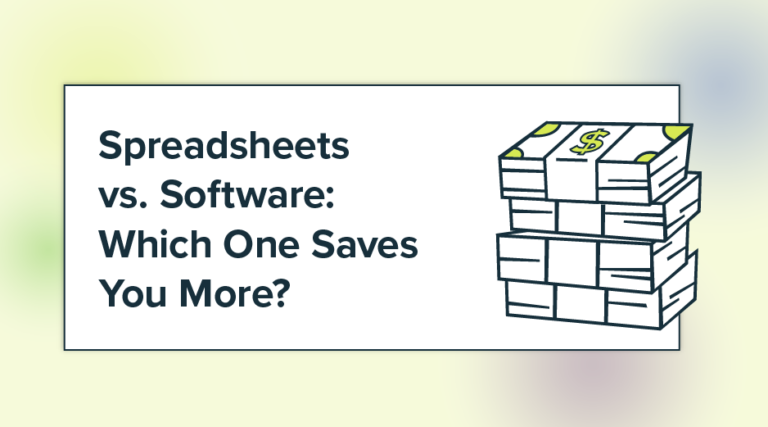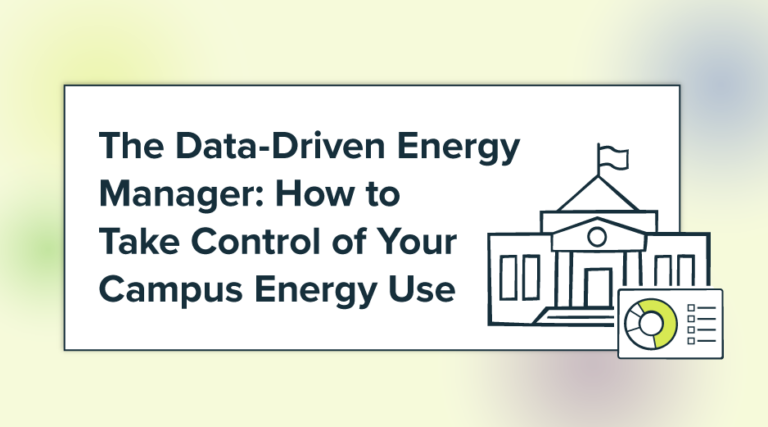The amount of energy a property uses plays a pivotal role in both sustainability and cost management goals. Tenants and consumers are looking to building owners to reduce environmental impact and lower energy bills for occupants, while state and federal governments offer funding for energy efficiency projects, implement benchmarking and performance requirements, and tighten carbon emission standards for buildings and their owners. Ignoring these energy efficiency regulations can result in steep fees and legal complications.
To achieve energy-use reduction targets and comply with regulations, businesses need to measure, analyze, and optimize their energy use with comprehensive and reliable tools. Energy Use Intensity (EUI) is a key metric for monitoring long-term energy efficiency trends for a building.
What is Energy Intensity?
Energy Use Intensity (EUI) is a metric that helps measure a building’s energy consumption and efficiency.
The EPA defines EUI as “a unit of measurement that describes a building’s energy use,” relative to its size or other characteristics. Generally, a low EUI represents better energy performance – however this is a relative measure. Certain buildings, by function and design, will always use more energy than others. EUI calculations help quantify a building’s progress over time, as well as serve as a useful measure when benchmarking against other buildings. EUI is an important measure tracked by the EPA when a building owner enters their data into ENERGY STAR Portfolio Managerⓡ.
To calculate EUI, divide the total energy consumed by the building in one year (in kBtu or GJ) by the total gross floor area of the building (in square feet or square meters). This standardized ratio allows building owners to compare energy efficiency across different industries, geographic regions, or their own portfolio.
Explaining the Energy Intensity Formula and Calculation
The formula for calculating EUI is as follows:
EUI = (Total Annual Energy Consumption) / (Total Floor Area)
Step-by-step Guide to Calculating EUI
- Determine Annual Energy Consumption: Start by calculating the total annual energy consumption of the building. Let’s start with a building that consumes 900,000 kBtu per year.
- Identify the Total Floor Area: Next, measure the total floor area of the building. For this calculation, our building has a total floor area of 12,000 ft².
- Compute Energy Use Intensity (EUI)
EUI = (900,000 kBtu) / (12,000 ft²) = 75 kBtu per ft² per year
Next, we’ll calculate the total annual energy consumption for a more energy-intensive building that utilizes 1,500,000 kBtu per year with a floor area of 20,000 ft².
EUI = (1,500,000 kBtu) / (20,000 ft²) = 75 kBtu per ft² per year
In this case, the higher energy consumption for a larger floor area still yields an EUI of 75.r. This highlights the importance of EUI as a standardized metric, allowing for meaningful comparisons across buildings of different sizes and energy usage levels.
What we’ve calculated in these examples is a building’s site EUI, using the amount of gas and electricity consumption reflected in the building’s utility bills. Benchmarking tools, like ENERGY STAR Portfolio ManagerⓇ, take the utility bill information you enter and perform additional calculations to get to the source EUI.
Source energy represents the total amount of raw fuel required to operate the building, including things like transmission and line losses before the energy arrives to your site. ENERGY STAR uses source EUI to compare your building to others. An easy way to remember this concept is: site EUI can help you understand how the energy use for an individual building has changed over time, source EUI helps to compare one building to another.
Good EUI is good business
Understanding and analyzing energy consumption over time allows organizations to make informed decisions that reduce costs, identify energy reduction opportunities, and satisfy regulators and customers alike
Benchmarking with EUI creates new opportunities. A business’s 12-month average EUI is a cornerstone in assessing energy efficiency. ENERGY STAR uses this 12-month average EUI as a benchmark for evaluating energy performance between various industries on a national scale.
Exploring Energy Use Intensity Benchmarks
The average EUI and target EUI will vary amongst industries and building sizes. An elementary school, for example, will have a much lower EUI than a large hospital.. EUI ranges from less than 100 to more than 1,400 across all hospitals measured by ENERGY STAR, while K-12 schools average a site EUI of less than 50.
What does this mean for benchmarking? The Environmental Protection Agency (EPA) and the Department of Energy (DOE) have collected and measured data from various industries in the United States to determine median EUIs.
Using these median EUIs, organizations can gain a better understanding of their own energy efficiency among national EUI metrics and against industry standards. This fosters a better understanding of their performance landscape and helps in the creation of energy reduction targets and projects. Ultimately, these reductions in energy use lead to reduced carbon emissions created by an organization.
By providing a standardized reference point, benchmarks like EUI allow businesses to identify outliers, pinpoint areas of improvement, and strategically align their energy efficiency initiatives and projects.
EnergyCAP for monitoring EUI
If your organization has many buildings, manually measuring, calculating, and tracking EUI is a tedious task that requires professional expertise and time. EnergyCAP automates EUI data management in a single source of truth for better building benchmarking.
EnergyCAP UtilityManagement takes EUI management to the next level by incorporating weather-normalized energy use in its annualized calculations. This accounts for external weather variables that are out of a business’s control. Trend charts allow users to view their annualized EUI, rolling up EUI values at every level of the organizational hierarchy. Simplify annual and ad hoc reporting with built-in EUI reports, or add EUI charts to a customized dashboard, then instantly share those resources with internal and external stakeholders.
Create a detailed picture of your organization’s long-term energy efficiency trends at the building, geographical, or portfolio level. Finding “energy hogs” allowing your team to prioritize work on the buildings that will have the best energy impact. By understanding a business’s energy use with exact precision, strategic decisions can be made to enhance overall efficiency and save your organization serious cash.
EnergyCAP UtilityManagement monitors long-term energy efficiency trends in buildings. EnergyCAP tools use the definition of EUI provided by ENERGY STARⓡ to calculate the energy efficiency of a given building, keeping you in compliance. Add energy project information into the platform, which can be seen directly in the EUI chart, making it easy to see the “before and after” and understand the impact of each specific project.
Our solutions directly integrate with ENERGY STAR Portfolio Manager eliminating the need for redundant data entry across platforms. EnergyCAP’s streamlined interface can automatically submit a building’s data into Portfolio Manager, show, track, and report your ENERGY STAR scores and data over time, and further benchmark your building portfolio with customized metrics and rankings.
Learn more about EnergyCAP UtilityManagement utility bill management solution.
Going beyond benchmarks with real-time data
While knowing a building’s predicted or measured EUI provides a good baseline, the real efficiency gains come from identifying and addressing energy usage at a granular level. Implementing sub-metering for individual systems such as lighting, HVAC, pumps, and plug loads allows organizations to gain a comprehensive understanding of where and how energy is being utilized.
This becomes especially important in already high-performance buildings, where plug and process loads can make up a substantial portion of the electrical load.
Industries have drastically improved their EUI by implementing real-time energy data analytics software like EnergyCAP SmartAnalytics. Tracking time-series data of key assets allows energy professionals to monitor building behavior in real-time for massive savings, quick decision making, and better decarbonization.
Building EUI for Efficient Energy Management
EUI is the most widely used and accepted metric for comparing energy efficiency across organizations,, buildings, and industries. By measuring and tracking a building’s EUI, leaders can implement sustainable practices to reduce energy consumption.
Unlocking the full potential of EUI management requires detailed calculations and tracking over time. EnergyCAP’s energy and sustainability ERP make this as easy as a mouse click. Precise calculations are at your fingertips when automatic benchmarking, ENERGY STAR integration, and shareable reports and dashboards put all of your energy and sustainability data in one place.
Request a Demo Today
 Best-in-class portfolio-level energy and utility bill data management and reporting.
Best-in-class portfolio-level energy and utility bill data management and reporting.
 Real-time energy and sustainability analytics for high-performance, net-zero buildings.
Real-time energy and sustainability analytics for high-performance, net-zero buildings.
 A holistic view of financial-grade scope 1, 2, and 3 carbon emissions data across your entire business.
A holistic view of financial-grade scope 1, 2, and 3 carbon emissions data across your entire business.
 Energy and sustainability benchmarking compliance software designed for utilities.
Energy and sustainability benchmarking compliance software designed for utilities.


